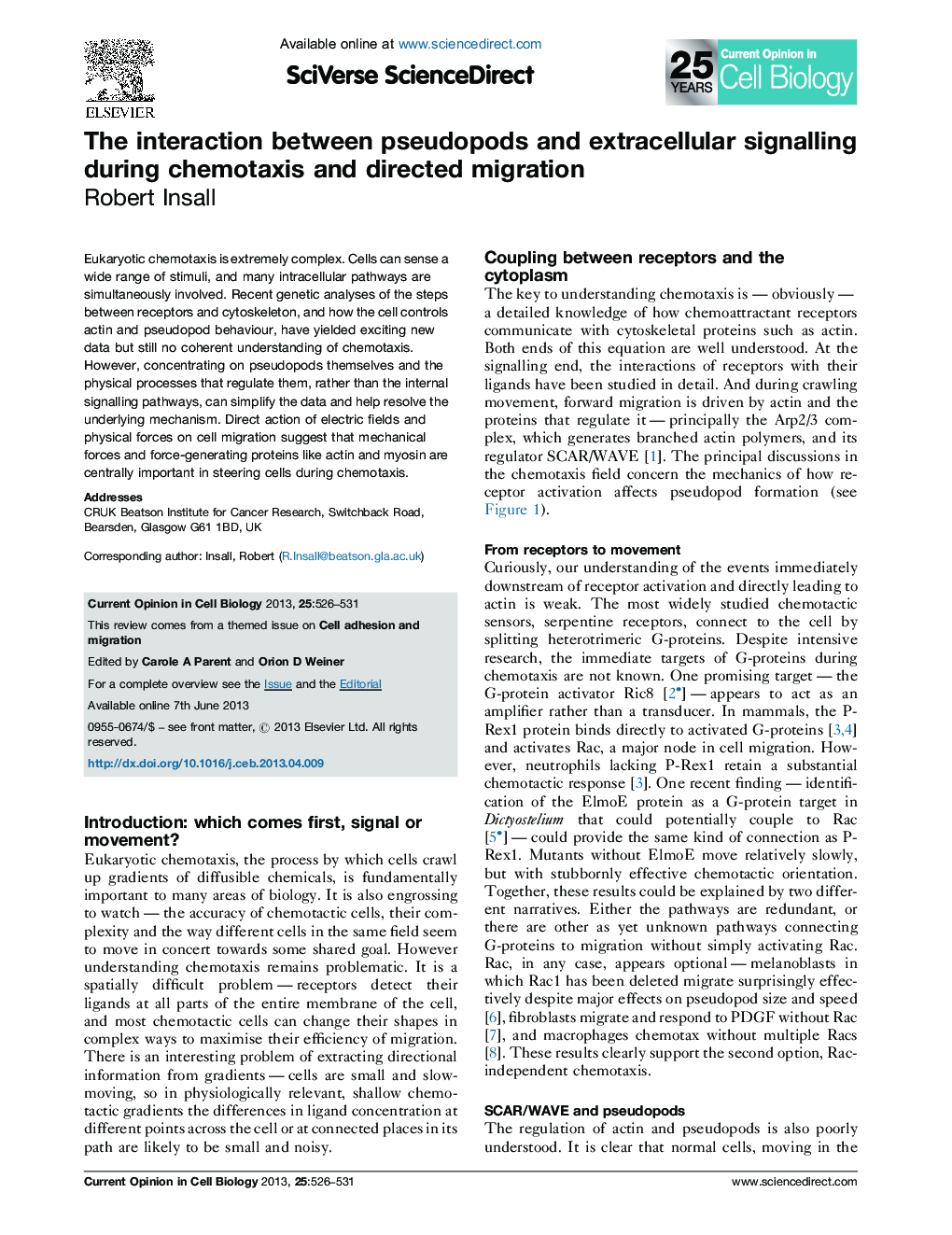| Article ID | Journal | Published Year | Pages | File Type |
|---|---|---|---|---|
| 10929242 | Current Opinion in Cell Biology | 2013 | 6 Pages |
Abstract
Eukaryotic chemotaxis is extremely complex. Cells can sense a wide range of stimuli, and many intracellular pathways are simultaneously involved. Recent genetic analyses of the steps between receptors and cytoskeleton, and how the cell controls actin and pseudopod behaviour, have yielded exciting new data but still no coherent understanding of chemotaxis. However, concentrating on pseudopods themselves and the physical processes that regulate them, rather than the internal signalling pathways, can simplify the data and help resolve the underlying mechanism. Direct action of electric fields and physical forces on cell migration suggest that mechanical forces and force-generating proteins like actin and myosin are centrally important in steering cells during chemotaxis.
Related Topics
Life Sciences
Biochemistry, Genetics and Molecular Biology
Cell Biology
Authors
Robert Insall,
